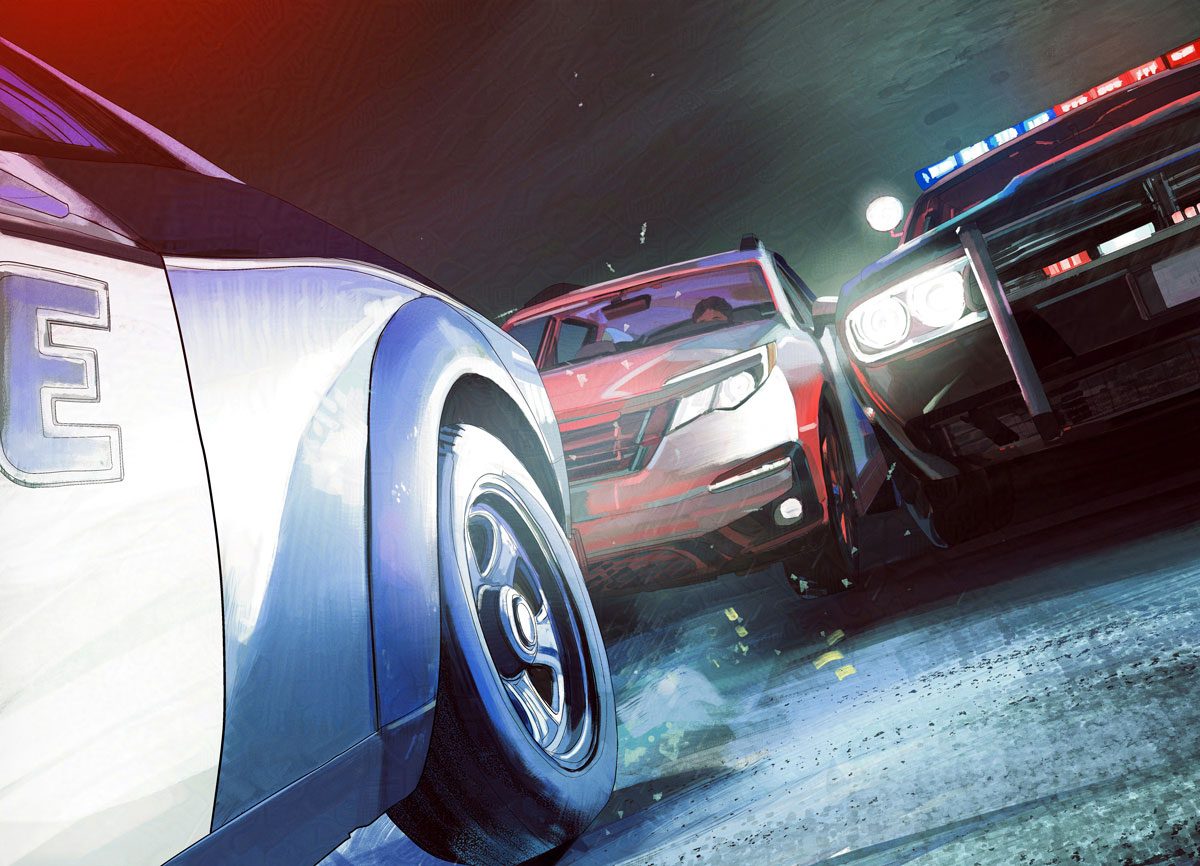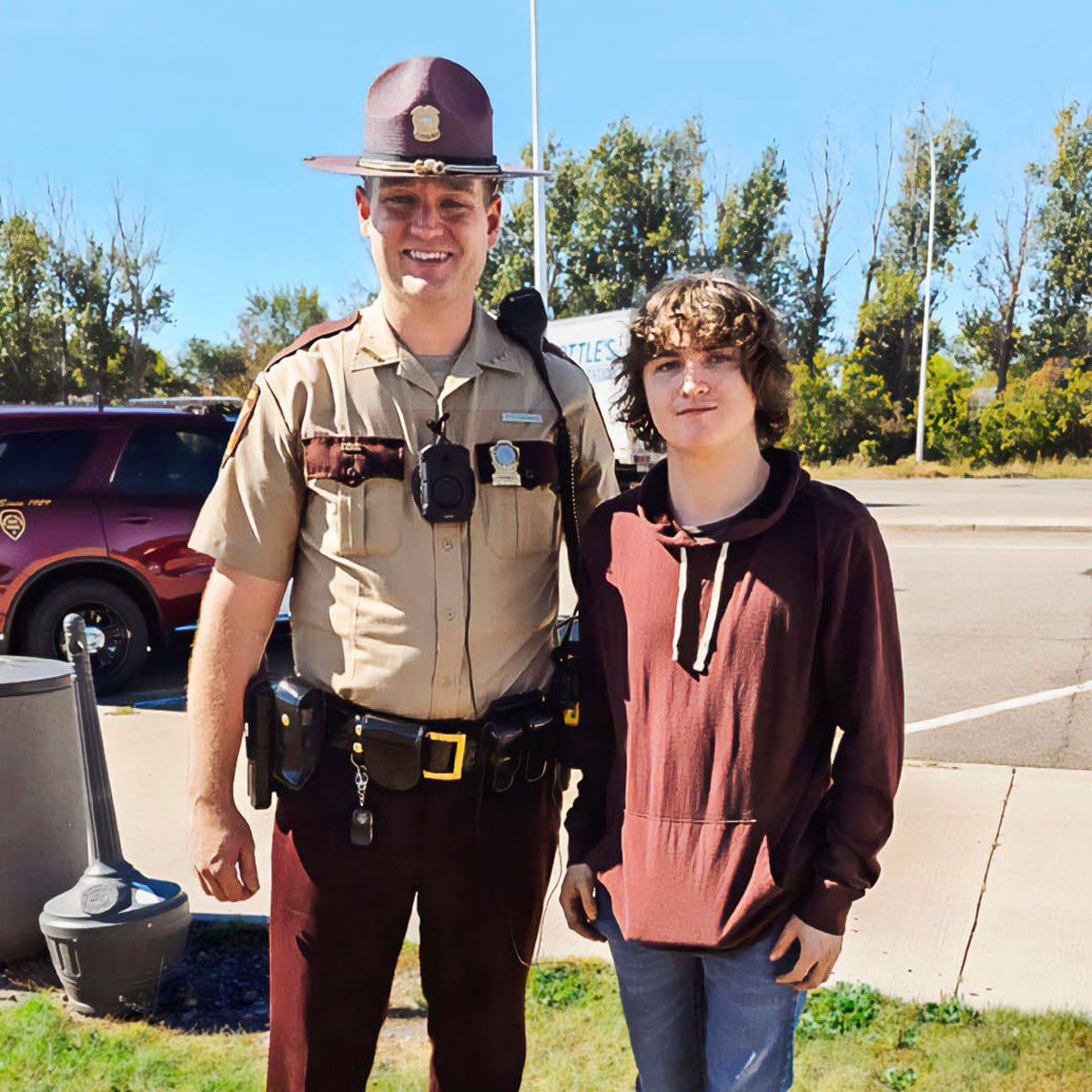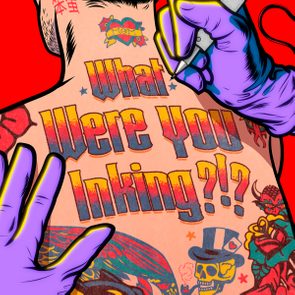A teen was trapped in a car accelerating out of control. Could it be stopped before he ran out of road?
The True Story of a Teen, a Speeding Car and a Race to Save His Life

Catherine Dutcher had just turned into the Hardee’s parking lot to pick up dinner for her family on an otherwise routine Tuesday evening last Septemberin rural West Fargo, North Dakota, when her phone rang.
“Mom,” her 18-year-old son, Sam Dutcher, said when she answered, “it’s happening again.” Catherine knew immediately what “it” was.
About a week and a half earlier, Sam was behind the wheel of his mother’s pearl white 2022 Honda Pilot SUV when it seemed to develop a mind of its own. Sam’s foot wasn’t on the accelerator, but the car, which had never given the Dutchers any problems, was accelerating anyway.
The first-year student at Minnesota State Community and Technical College slammed his foot on the brake. He held it there until the car went into “limp mode,” a safety feature of modern cars that activates when the automobile detects a problem with a critical system. When the Pilot came to a stop at the side of the road, Sam called his mom, and they agreed that he shouldn’t attempt to drive the vehicle home. Instead, they had it towed to the Honda dealership in Fargo.
For several days, the technicians ran every diagnostic test they could, but they were unable to duplicate the sudden acceleration Sam had experienced. After the mechanics said that, as best they could tell, everything was fine, the Dutchers—a three-car, three-driver family that was feeling the strain of being down a car—decided to pick up the SUV and bring it home.
On that Tuesday in September, Catherine dropped Sam off at the dealership to pick up the Pilot, then headed to Hardee’s. The teenager, who has a mop of wavy brown hair a bit like Mick Jagger’s signature hairstyle of the late ’60s, got behind the wheel, adjusted the seat and mirrors, and pushed the power button. The engine started, no problem. All systems normal. Sam pulled off the lot and started the 10-minute drive home. About a mile from his parents’ house, driving on a two-lane road in Cass County, the speed limit switched from 40 to 55. Sam accelerated, then eased off the gas.
Get Reader’s Digest’s Read Up newsletter for more real stories, fun facts, humor, cleaning, travel and tech all week long.
More than a joyride
The car kept speeding up. Oh, no, Sam thought. Not again. He tapped the brakes to slow down—nothing. He tried pressing the brake pedal to the floor and holding it there to force the vehicle into limp mode again. This time it didn’t work. He pressed the emergency brake button, then he tried shifting into park, then reverse, hoping to strip the gears or blow out the transmission. The car’s computerized system ignored everything he did. It was calling the shots.
Finally, he hit the power button and held it in. The car just kept going faster. Sam didn’t want to take his eyes off the road to dial 911 on his phone, so he tried to place the call through voice commands. The response: “That number is not in your contacts.” With the car’s speed slowly creeping up to more than 80 mph, Sam gave up on 911 and told the phone to call a number that was in his contacts.

“Mom, it’s happening again.” The car was racing east down a rural road that didn’t have traffic lights, in the northern Fargo area, approaching the Minnesota state line. Sam wasn’t just afraid of crashing into another car or careening off the road—he told his mom he was worried that if the police saw him driving over the speed limit and started chasing him, he wouldn’t be able to pull over.
Catherine, trying her best to remain calm, told Sam she would call the police and make sure they knew that the white Pilot speeding through town was not doing so intentionally. Is this really happening? Catherine wondered. She could barely process it. But she stayed focused on what she had to do. She hung up on her son, called 911 and got right through to Red River Regional Dispatch, which covers Cass County in North Dakota and neighboring Clay County in Minnesota.
Zach Johnson, a deputy in Clay County, was in his patrol car, having just pulled out of the garage of the county jail in the town of Moorhead, Minnesota, when he overheard the radio traffic from across the state line about a reckless vehicle entering Clay County. There was also chatter about a mother in West Fargo who had called to say that her 18-year-old son was behind the wheel of a car with some sort of stuck accelerator.
Johnson joined the conversation. Just as Sam had feared, officers initially thought this might be a stupid teenager taking a joyride. But Johnson figured that because the mom had placed the call, it almost certainly wasn’t a prank. The roads weren’t too crowded, thankfully, and in a phenomenal stroke of luck, the runaway car was flying down 90th Avenue, about as straight a road as you’ll find in the region. Still, it was a two-lane road, so Sam repeatedly had to overtake cars and trucks that were going much closer to the speed limit than he was.
When there was no oncoming traffic, he passed on the left. Several times, he had to squeeze onto the shoulder to avoid rear-ending the vehicles in front of him. The Pilot was now going over 90 mph, and every maneuver put Sam at risk of losing control.
The end of the road
At first, Johnson thought he might be able to catch up to the Pilot, but he soon learned that Sam was farther east than he had realized. Johnson had no hope of getting to him.
Catherine Dutcher had given her son’s cellphone number to the 911 operator, who transmitted it from the dispatch center. Since Johnson couldn’t be on the scene physically, he decided to call Sam. The young man, who had been waiting for someone, anyone, to call, answered right away. Johnson didn’t hear much panic in Sam’s voice—the kid’s adrenaline was pumping, but he was calm.
The deputy started troubleshooting. “If you hit the brakes, nothing happens?” he asked as the Pilot approached the intersection with potentially busy U.S. Highway 75, north of Moorhead.
“Right, nothing happens,” Sam said.
Johnson wondered if a corner of the floor mat was holding down the gas pedal. “Is the accelerator stuck down?” he asked. No, Sam assured him, the accelerator wasn’t physically stuck; he could move it with his foot. “Are you able to push the e-brake and just lock ’em up?” Johnson asked. Nope, that wasn’t doing anything either, Sam said as he zipped safely through the intersection with Highway 75.
Johnson and the other police officers on the radio moved on to the next option: Someone would get ahead of Sam and set up Stop Sticks—strips with metal spikes that would puncture his tires when he ran over them. It was becoming a race against the clock, though. Sam was approaching the town of Hitterdal, after which he would have about 8 more miles before the road would end. And all the while the Honda Pilot just kept going faster. Eight miles isn’t a lot when you’re going more than 100 mph.
Running out of time
For Minnesota State Trooper Zach Gruver, this was his “Friday.” That’s what the officers who work eight days in a row, then get six days off, call their final day on. When Gruver started work at 5 p.m., he was looking forward to an uneventful shift and getting home to his wife, who was due to give birth to their first child in two weeks.
Gruver spent the first hour or so of his shift at a local car wash working at a seat belt check, where people could make sure their baby and toddler car seats were installed properly. From there, he planned to head over to the police station in Moorhead and complete an online training course. But he had one errand to run. He’d gotten an oil change that day in his department-issued Dodge Charger, and he took a quick detour to run the receipt over to the local state patrol office in Detroit Lakes for reimbursement.
Had he been at his desk at the station when word about the runaway car came in, Gruver would have been too far from Sam Dutcher to get involved. Instead, when the dispatcher first relayed the information, Gruver was headed in the same direction as Sam, about 20 miles ahead of him and about 5 miles south of the road he was on. The trooper didn’t ask anyone if he should get involved.
“I’m gonna try to get sticks out on 90th Avenue,” he said on the Clay County channel, and he hit the gas. Gruver came up Highway 9, some 14 miles east of the North Dakota state line, but couldn’t quite get to 90th Avenue ahead of Sam. He saw the lights of Cass County police cars in pursuit of the Pilot zoom by as he approached from the south. They were driving larger cars, Chevrolet Tahoes, which would top out at around 120 mph. His Charger had a V-6 engine and could get to around 140. So Gruver came up behind them, floored it, and passed the other officers in the left lane. He couldn’t see Sam’s Pilot.

Where is this car? he wondered. Sam was going so fast that he had pulled away from the police cars in pursuit. Gruver went as fast as his car would let him, and he finally laid eyes on the Pilot. He pulled up close enough for his front radar to get a read: Sam was screaming down the road at 113 mph.
Before he could think about getting far enough ahead of Sam to drop the Stop Sticks, Gruver realized they were coming up on the intersection with Highway 32 in Hitterdal. The sun had set, visibility was getting worse, and where 90th Avenue crosses 32, there are stop signs for traffic going east or west, but not for cars going north or south on the highway. Sam, barreling east, was going to blow through his stop sign and potentially T-bone another vehicle at high speed. Gruver passed Sam and slowed down at the intersection with his lights flashing, hoping to stop traffic on Highway 32.
Gruver’s intervention proved unnecessary—there were no cars or trucks crossing as Sam’s Pilot flew through the intersection in a blur. But now Gruver had to floor it and pass Sam again. Gruver was in conversation with Johnson—who was still on the phone with Sam—and Clay County Deputy Brandon Desautel, who was driving the next-closest car in pursuit.
As the officers spoke, they crossed from Clay County into Becker County, and Johnson realized that they had about 3 or 4 miles before the paved road would end at a T intersection. On the other side was a narrow dirt path and a field occupied by cornstalks and telephone poles. That wasn’t going to give Gruver enough time to pull over, pop his trunk and deploy the Stop Sticks.
Expecting the worst
The fastest Sam Dutcher had ever driven before this night was about 90 mph. He was controlling the Pilot just fine—“the vehicle handled really well for that speed,” he would later say with a laugh—until he hit about 105 mph. That’s when he began to struggle. At that point, one slight jerk of the steering wheel, one little pothole on the road, and anything could happen. He could also see the upcoming T in the road on the GPS map on the car’s display screen.
It was then, a little more than 15 minutes into this breakneck nightmare, that the most sickening thought entered the 18-year-old’s mind: I am going to die tonight. Meanwhile, Catherine Dutcher was getting updates from the 911 operator, who tried to reassure her: “We have officers from all over and medical all coming to him, OK?” It had the opposite effect. Knowing they were sending EMTs got Catherine thinking the worst—that her boy wasn’t going to survive. Sam’s dad, Timothy Dutcher, was driving toward the scene, while Catherine was at home with Sam’s 11-year-old brother, doing her best to comfort him.
Out on the road, it was time for a desperate, last-ditch effort to prevent a tragedy. Officers are trained to perform a pursuit intervention technique, or PIT, when chasing other vehicles, whereby they nudge the other car from behind to make it spin out. Gruver doubted it could be done at speeds in excess of 113 mph. That won’t end well for him or for me, he thought.
Gruver had an idea. He’d get in front of Sam, let the Pilot rear-end him, and hit the brakes on the Charger—hoping that stopping his car would also stop Sam’s car. “I’ll let him make soft contact,” Gruver told Johnson and Desautel, “and then just kind of ride the brakes down, and hopefully … ” His voice trailed off.

Johnson later described the plan as a “hoping for the best, expecting the worst type of thing.” In Gruver’s mind, there wasn’t time to consider whether or not it would work. It had to work, because the alternative was for the kid to go off the end of the road and into that field at over 110 mph.
When Gruver is on the job, he takes his wedding ring off and puts it in his cup holder. As his car rocketed through Becker County, though, he put the ring on. If this doesn’t work and we end up rolling, I don’t want to lose my wedding ring, the father-to-be thought.
Gruver, doing about 130 mph, passed Sam for a second time. Desautel was keeping pace with Sam and was going to position his car directly to the left of the Pilot, hoping to keep Sam from kicking out into the left lane and spinning out wildly. When Gruver began to slow down, the teen tried to pass him—the plan had not been clearly communicated to him.
Johnson explained to Sam what they were trying to do. “So you want me to hit the back of that car?” Sam asked in disbelief.
Johnson raised his voice a bit. “Yes,” he said. “Run into the back of his car.” Sam tried his best to center his car behind Gruver’s vehicle. And then something unexpected happened: The Pilot slowed down. Its forward collision mitigation system sensed the car in front of it and began to reduce speed. Gruver slowed to about 50 mph and watched Sam’s car in his driver’s side mirror as it slowed down also. The Pilot got so close that its headlights were no longer visible in the trooper’s side mirror. As Gruver turned his head to scan for the car in his passenger-side mirror—crash!
The Pilot jolted the Charger from behind, and Gruver hammered the brakes. “Hold ’em! Hold ’em!” he yelled as both cars ground to a halt. Sam’s Pilot was right up against the trooper’s car—still trying to go. Its tires were spinning, squealing, but Gruver wouldn’t let off the brake. Desautel pulled his car up against the Pilot on the left, got out and helped Sam climb out the passenger side.
Nobody was injured. Neither Sam nor the officers can quite remember how long it took—it was all a bit of a euphoric haze—but eventually the runaway Pilot stopped trying to plow forward. The electronics were still on, the air was pumping, but, after tearing down more than 30 miles of North Dakota and Minnesota roads in about 20 hellacious minutes, the engine finally stopped revving and the tires stopped turning.
Johnson arrived on the scene a couple of minutes after the crash, and met the young man he’d been on the phone with. “Hey,” he told Sam, “it’s not too often you get to drive 113 miles an hour, run from the police and crash into a squad car, and be able to go home afterward, you know?”
A cautious ending, yet questions remain
Months later, nobody had gotten to the bottom of why the Dutchers’ Pilot did what it did. Technicians from Honda inspected the vehicle, looking for answers, and representatives from the National Highway Traffic Safety Administration were scheduled to do the same. The car was deemed, for insurance purposes, to be totaled.
Sam may have escaped physically unscathed, but the incident has stuck with him. Most nights he has nightmares in which he relives his near-death experience. He wasn’t willing to drive for about two weeks, and even after he did get back behind the wheel, “he’s still nervous about it,” Catherine says. “If he hears any sirens or sees flashing lights or a car that resembles the trooper’s car, you can almost see him freeze up and glaze over.”
The teen is back in the routine of his classes at Minnesota State Community and Technical College—where he’s studying to become, of all things, an auto mechanic. If anyone with a passion for motor vehicles has earned the right to spend 40 hours a week with his nose buried in cars that are going exactly zero miles per hour, it’s Sam Dutcher.
The excitement for Zach Gruver wasn’t quite over. He and his wife became parents about three weeks after the heroic rescue, nine days past their due date. They called their baby boy Mason, a name that had been decided in advance—he says there was no thought given to pivoting to “Chase.”

A few days after the harrowing incident, outside the highway patrol office in Moorhead, Gruver was reunited with Sam and met Catherine for the first time. When the trooper extended his right hand toward her, she asked, “Can I hug you?” and wrapped both arms around the officer who had saved her son’s life. As she later said: “A handshake just wasn’t gonna work.”
Why trust us
At Reader’s Digest, we’re committed to producing high-quality content by writers with expertise and experience in their field in consultation with relevant, qualified experts. We rely on reputable primary sources, including government and professional organizations and academic institutions as well as our writers’ personal experiences where appropriate. We verify all facts and data, back them with credible sourcing and revisit them over time to ensure they remain accurate and up to date. Read more about our team, our contributors and our editorial policies.


